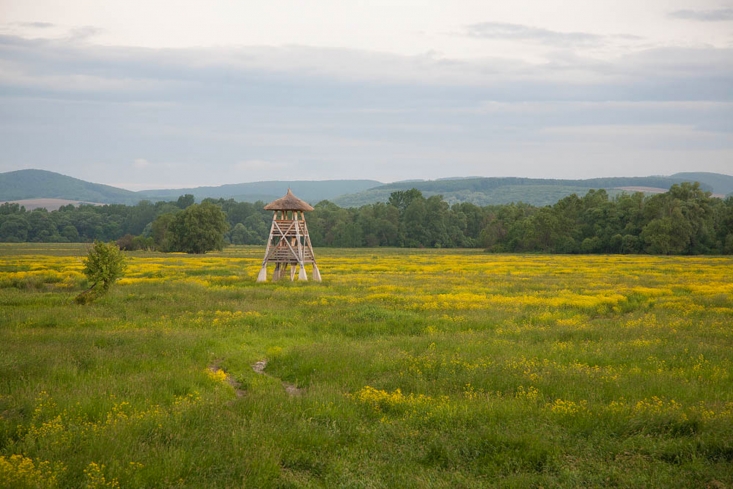The national park's other namesake seems like an insignificant watercourse for most of the year, but the people who live here know that it is a real honour that has made the Ipolys the most dangerous river in our country. There is a difference of almost nine hundred times between the low water and high water flows, which is exceeded only by the Tisza in the Carpathian Basin.
The Ipoly, starting from the 1,100-meter-high slopes of the Vepor Mountains in Slovakia, flows into the Danube at Sochi after a distance of just 220 kilometers, covering 5,000 km2 and is one of the left-bank tributaries.
The river's large catchment for its size means that, following heavy rainfall or when the melting starts suddenly in spring, a huge volume of water moves and spreads out over the areas surrounding the river. This is determined by the dynamics of the river, which in previous centuries was monitored by local farmers, who knew full well that it was unnecessary and damaging to over-regulate it.
However, the rise of industrial development and the subsequent technocratic era have also left their mark on the valley, with the cutting of several bends to 'shorten' the river by some 50 kilometers and the construction of six dams. The idea was that all of this should have resulted in the river being tamed and a predictable flow.
However, the straightened and accelerated river has "choked" itself considerably over a few decades, i.e. the riverbed has deepened, and the groundwater in the surrounding villages has dropped dramatically. The dams act as an artificial barrier to fish from the Danube during the spawning season, preventing them from reaching their ideal spawning grounds.
Fortunately, for a variety of reasons, certain stretches of the Ipoly have been left unregulated. One such stretch is the 30-kilometer stretch between Ipolyszög and Hont, an area of almost 3,000 hectares of which has been protected by the Danube-Ipoly National Park since 1997. Since 2001, this legal protection has been coupled with international recognition through the Ramsar Convention. The river valley is one of the few bilateral Ramsar sites in Hungary, although Poiplie in Slovakia covers only 450 hectares.
It is no coincidence that the Ipoly Valley is a region of extensive meadow management with its own grazing livestock, which also ensures the genetic conservation of the indigenous Hungarian grey cattle.
Wildlife management is also the responsibility of the Directorate, due to the much-vaunted, but long-abandoned natural balance, but the "wise use" efforts of the Ramsar Convention, which guarantees the protection of wetlands, are overridden here by the complete sparing of small game. A spectacular 'symptom' of this is the thousands of wild geese that migrate to our quiet floodplains every year, in varying numbers, to escape the hunting pressure on the Slovak side of the river.
In cooperation with our Slovakian partners, we are trying to show the diverse and admirable natural values of the Ipe river valley on several nature trails on both sides of the river to the sensitive and receptive visitors. There are observation towers to watch the flocks of birds during the spring floods, and designated routes, which can also be used by bicycle, to learn about the life of summer reapers.
